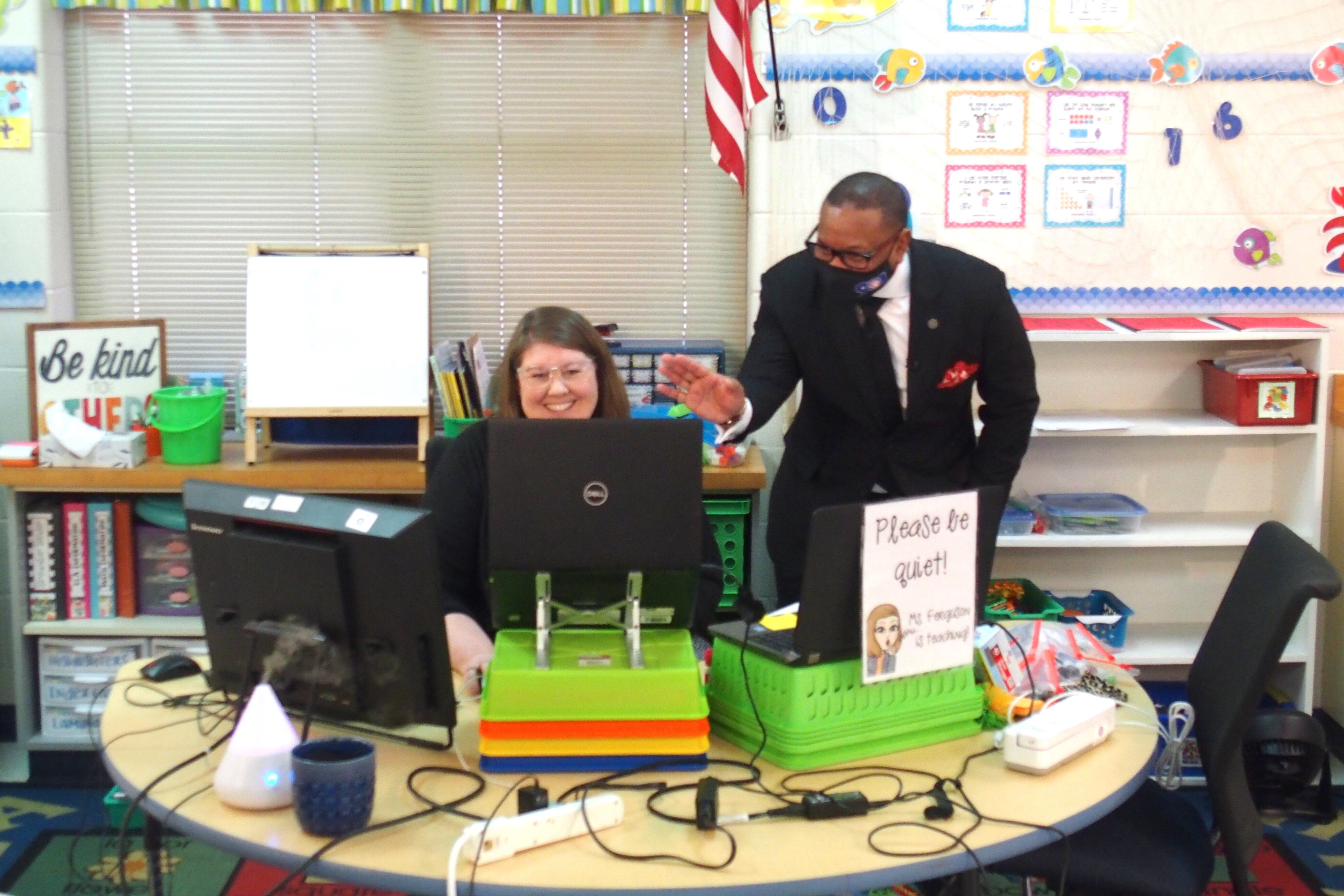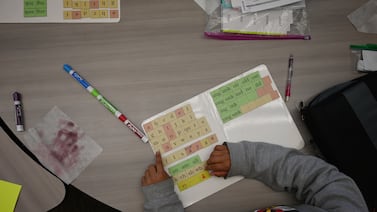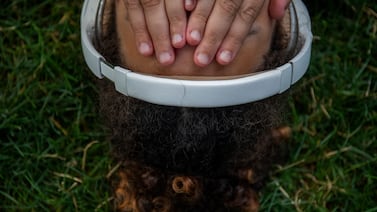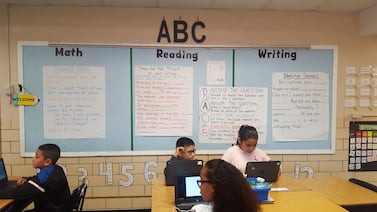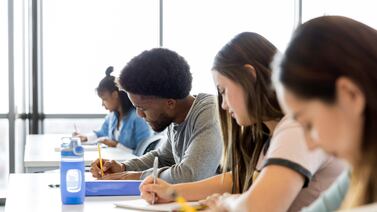Superintendent Joris Ray defended his decision to keep Memphis school buildings closed, even though the governor is “disappointed” families still don’t have the option to return their children to classrooms.
“We’re going to continue to do what’s best for our students and our staff,” and continue virtual learning if necessary, Ray said.
“No one will force me to open schools,” as long as local district leaders can decide for themselves, he told reporters Thursday while visiting William H. Brewster Elementary School.
The Shelby County Schools leader said some parts of online instruction are likely to continue even after the pandemic subsides, but noted that securing vaccines for teachers will be key to returning to normalcy.
Ray has kept buildings closed to students since March. He had planned to reopen classrooms this week, but as COVID-19 cases surged in Memphis, he delayed the return until at least Feb. 8.
“I wish we could return back tomorrow,” he said. “But also I’m disappointed with the push to return to brick and mortar when our numbers here are still in the triple digits. We have folks dying every day.”
Ray was disappointed that Gov. Bill Lee has not required masks to curb the spread of the virus, and felt it was “contradictory” for the Tennessee Department of Education to push for in-person learning as most of its 1,500 employees work remotely. Lee has repeatedly declined to require Tennesseans to wear a mask in public, though he has strongly encouraged it.
On Thursday, the Shelby County Health Department reported 31 deaths from COVID-19, bringing the total to 984, and more than 600 new cases. As of Thursday, Tennessee had the sixth highest rate of new cases in the nation.
The tension between the Memphis leader and state officials illustrates the differences in how Tennesseans are responding to school safety concerns related to the virus.
Black parents nationwide have been more likely to choose virtual learning, even if there is an in-person option. More than three-fourths of the Memphis district’s students are Black, compared with a quarter of students statewide.
Ray also noted many Memphis students live in poverty, have less access to health care, and are more likely to have elderly relatives with underlying conditions living with them — factors that would put them at greater risk of contracting COVID-19. And recent studies suggest that where the virus’ spread is already high, students and staff are more likely to contract the virus.
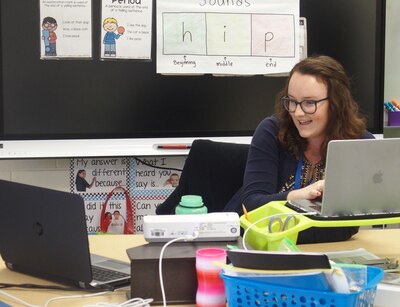
In his plan to reopen classrooms, Ray allowed teachers to choose remote instruction and 83% plan to do so. Ray said he sees vaccinations as “essential” to convincing teachers to return to classrooms, but stopped short of saying reopening schools would be contingent on teachers getting the shots. The district sent out a survey to staff this week to help the local health department gauge interest.
“We can’t force anyone to take the vaccine,” he said. “But we want to ensure that everyone has the opportunity to do so. That’s key.”
The state recently moved teachers up in the vaccination line, but counties across the state, including Shelby County, are quickly running out of doses. The vaccination schedule is based on who is at high risk of dying of COVID-19, but also prioritizes workers who have the most contact with the public.
Once teachers can get vaccinated and full in-person instruction resumes, Ray believes some aspects of virtual learning should continue. Before the pandemic, students did not have laptops or tablets to take home. This summer, the district used federal coronavirus relief money to purchase devices for all 90,000 students, along with Wi-Fi hotspots for those who didn’t have internet access at home.
“The devices will not go away when the pandemic ends,” he said.
Ray anticipates students who have discovered that they are “thriving” in online learning can continue. Students could complete internet-based assignments at home designed to help them catch up academically rather than use classroom time. It’s also possible that students with long-term illnesses or who are expelled could remain connected to their home school with a device rather than start over with different teachers. Ray said the district’s chief academic officer, Antonio Burt, will present specifics in a few weeks.
“It’s about access and opportunity for all of our students to continue to learn,” he said.


